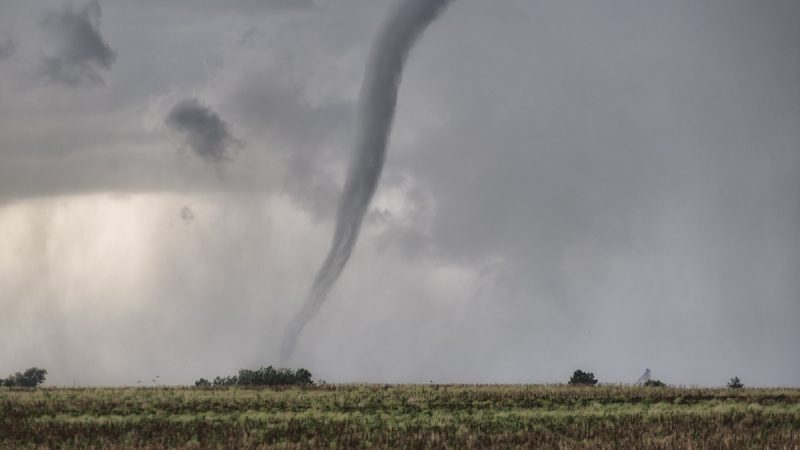How To Prepare For A Tornado
It comes with the turf when you live in the South. Tornado season typically begins in March and lasts through May. Maybe you’ve weathered multiple storms or perhaps it’s your first season. Either way, it can be difficult to keep up with the latest on how to prepare. We’ve got you covered with this guide.
Before The Storm
1. Check the forecast regularly
- The forecast can change rapidly. To stay up to date, follow the National Weather Service in Birmingham on Twitter. There you’ll find updates on storm warnings, watches, intensity and timing.
- The National Oceanic and Atmospheric Administrations Storm Prediction Center also provides regular updates on its website.
- You can also turn on the radio and set it to any station. It will automatically interrupt the regular programming to share severe weather information relevant to your area. But a regular radio is no good if your power goes out. Weather experts advise that you invest in a battery-powered weather radio.
- Enable weather alerts on your cell phone and make sure your phone is not on “Do Not Disturb” or silent mode.
- Download additional weather apps to your cell phone.
- Weather experts advise that you do not rely on outdoor warning sirens. Here’s why.
2. Review storm terminology
- A tornado watch means conditions are favorable for a tornado. If a tornado watch is issued, review your emergency plan, finalize your essential bag and prepare your safe room. The watch area is typically large, covering numerous counties or even states.
- A tornado warning means a tornado has been sighted or indicated by weather radar. If a tornado warning is issued, you should go to your safe room immediately. Warnings typically encompass a much smaller area like specific cities or counties.
3. Charge your devices
- This may include your phone, a backup phone battery, a laptop and others.
4. Prepare a small bag with essentials
- This should be a bag that can be easily carried like a backpack or duffle bag
- Stock your bag with essentials:
- non-perishable food
- three days’ worth of water (one gallon per day per family member)
- prescription medication, eyeglasses, oxygen tanks, etc.
- important documents like a driver’s license, birth certificate, passport, insurance policies, and a hard copy that includes cell phone numbers of close family and friends (sealed in a waterproof bag like a gallon resealable storage bag)
- cash, debit or credit card
- extra set of clothes that you can move around in
- battery-powered weather radio
- flashlight
- extra batteries
- extra phone charger
- first aid kit
- helmet for each family member
- blanket or sleeping bag for each family member
- whistle (to signal for help)
- personal hygiene supplies (including feminine products, if applicable)
- books and small games to pass the time (e.g., a deck of cards)
- special items for infants, older family members and pets
5. Prepare your safe room
- This should be an interior room on the lowest level of your home and away from windows.
- Examples may include a bathroom, basement, storm shelter or a closet that can fit your family.
- Place your prepared bag in your safe room so you don’t have to search for it later.
- Weather experts say mobile homes are not safe during tornadoes. If you have enough time, it’s advised you travel to a nearby shelter or even a nearby structure or vehicle. If you do decide to travel before a storm, read these tips by the American Red Cross:
- Watch for tornado danger signs: dark, often greenish clouds – a phenomenon caused by hail; wall cloud – an isolated lowering of the base of a thunderstorm; cloud of debris
- Always buckle your seatbelt
- Stay away from bridge/highway overpasses
- If strong winds and flying debris occur while driving, pull over and park, keeping your seat belt on and engine running. Put your head down below the windows, covering your head with your hands and a blanket
6. Make a communication plan
- Create an emergency plan with your family. The American Red Cross has a template you can use. Check it out here.
- Sometimes storms can strike at unexpected times like at night while you’re asleep or even during the day while you and your family are away from home. That’s why it’s key to check the forecast regularly.
- Stay in communication with family and friends, and don’t assume they’ve heard the latest watches and warnings. Weather experts say your text or call could save someone’s life.
7. Prepare your home
- Make a list of items to bring inside before the storm hits (e.g., patio furniture, small plants, etc).
- Remove any debris or loose items in your yard. Branches and firewood may become missiles in strong winds.
- Make trees more wind resistant by removing diseased or damaged limbs, then strategically remove branches so that wind can blow through. Strong winds frequently break weak limbs and hurl them at great speed, causing damage or injury when they hit.
- Consider installing permanent shutters to cover windows. Shutters can be closed quickly and provide the safest protection for windows.
- Strengthen garage doors. Garage doors are often damaged or destroyed by flying debris, allowing strong winds to enter. As winds apply pressure to the walls, the roof can be lifted off, and the rest of the house can easily follow.
During The Storm
1. Continue to monitor the weather
- Listen for mentions of your city or county along with “tornado watch” or “tornado warning”
2. Stay indoors
- Your area may not be under a tornado warning, but there could still be strong winds in your area. Stay indoors to avoid lightning, hail, falling trees or other flying objects
3. Keep your pets close by
- Pets like to hide during storms, according to experts with the Greater Birmingham Humane Society. They advise that you keep your furry friends nearby and close doors to extra rooms that aren’t being used. That way you don’t have to go searching for your pet when a tornado warning is issued.
- Put on their collars and keep their leash nearby
4. If the storm could strike overnight
- Keep close-toed shoes near your bed
- Place your phone on the charger next to your bed and make sure it’s turned on “loud” and not on “Do Not Disturb” or “Sleep Mode”
- If you don’t have a weather radio, keep on a radio or TV with the volume turned up
Kennedy Center vows to sue musician who canceled performance over Trump name change
The Kennedy Center is planning legal action after jazz musician Chuck Redd canceled an annual holiday concert. Redd pulled out after President Trump's name appeared on the building.
Our top global photo stories from 2025: Fearless women, solo polar bear, healing soups
These stunning photos include a polar bear in a Chinese zoo, a teen in Zambia facing an uncertain future, Mongolian kids watching TV in a tent, a chef prepping a bowl of good-for-you soup.
ADHD drugs may work indirectly to boost attention
Drugs like Adderall and Ritalin appear to help children with ADHD by activating brain areas involved in alertness and motivation.
Russia attacks Kyiv, killing 1 and wounding many ahead of Ukraine-US talks
Russia attacked Ukraine's capital with missiles and drones early Saturday morning, killing one and wounding over 20 people a day before talks between Ukraine and the U.S., local authorities said.
Myanmar is set to hold phased elections. Here’s why they’re being called a ‘sham’
Myanmar's military rulers are holding a general election in phases starting Dec. 28 amid the country's civil war. The head of the U.N. says the vote will be anything but free and fair.
Perry Bamonte, guitarist and keyboardist for The Cure, dies at 65
Perry Archangelo Bamonte, longtime guitarist and keyboardist for the influential goth band The Cure, has died. He was 65. The band announced his death on their official website on Friday.







